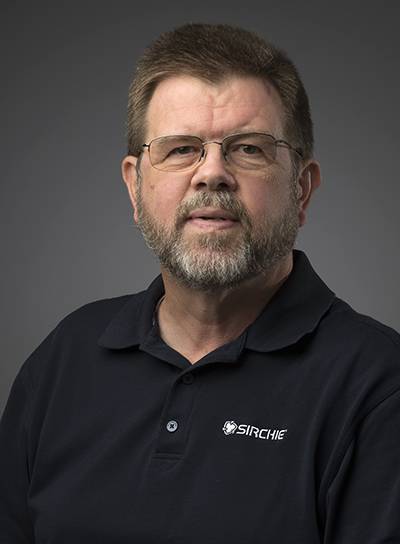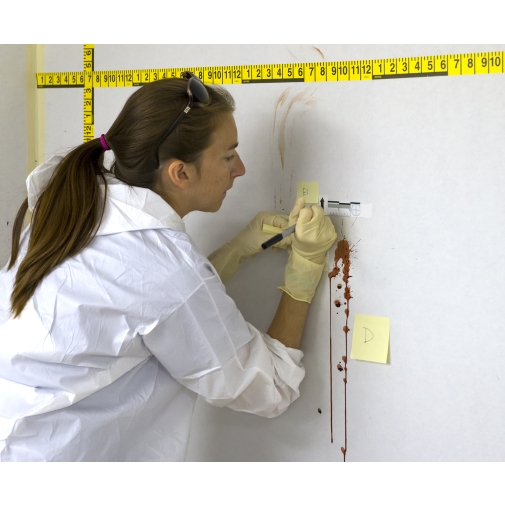- About Us
- Support
- Privacy Policy
- Contact us at +1 919-554-2244 or 1-800-356-7311
Held at Sirchie's Headquarters in Youngsville, NC Oct 20-24, 2025
Start time for this class is 8:30 am.
This class is approved for 40 hours toward IAI Crime Scene & Bloodstain Pattern Analyst certification and recertification.
Throughout the United Stat es and certainly in smaller departments, investigators face the complexities of violent crime scenes without the proper support or training. Like with all forensic disciplines, Bloodstain Pattern Analysis is only useful when the investigators recognize, understand, capture, and process the stains and stain patterns that they observe are observing at the crime scene.
This five-day, hands-on course is intended for those who are responsible for investigating and processing violent crime scenes involving bloodshed. The course intended to assist students in developing a fundamental knowledge of the discipline of bloodstain pattern analysis. In addition, this course will illustrate to students the basic principles of bloodstain pattern analysis and the practical application of Bloodstain Pattern Analysis in real casework. It must be understood that this course is not intended to make the student and instance expert in the discipline.
Course Objectives:
- Demonstrate knowledge of the development, history, and advancement of bloodstain pattern analysis
- Demonstrate knowledge of the inherent limitations of bloodstain pattern analysis.
- Recognize key bloodstain patterns and understand the mechanisms by which they are created.
- Determine impact angles for individual bloodstains.
- Demonstrate an ability to evaluate a bloodstain pattern scene.
- Determine a probable area of convergence for a group of bloodstains.
- Demonstrate the ability to combine area of convergence with impact angle to locate the probable area of origin for a given blood spatter event.
- Recognize proper protective measures to follow in a bloodstain scene.
- Demonstrate knowledge of the methods of documenting bloodstain scenes, both photographically and in written format.
Daily Schedule
Day 1
- Welcome, Introductions and Administrative Matters
- Photography Review
- Introduction to Bloodstain Pattern Analysis
- Important reminders when conducting a bloodstain analysis and limitations of analysis.
- History of Bloodstain Pattern Analysis
- The scientific method and developing objective case-oriented experiments.
- OSAC information
- Anatomical & Physical Properties of Blood
- Universal precautions
- Bloodstain Terminology & Discussion
- Case Studies
- Review of Day 1
Day 2
- Discussion of bloodstains and bloodstain patterns
- Bloodstain Taxonomy & Decision Charts
- Examination of Various Bloodstains and Bloodstain Pattern (poster board stains)
- Presumptive Blood Testing with hands on exercises (Kastle Myers, luminol, LCV, etc.)
- Practical Exercise 1 – Volume of Blood in Relation to Stain Size, Stain/Pattern Documentation and Exercise Discussion
- Practical Exercise 2 – Stain Size vs. Distance Fallen, Stain/Pattern Documentation and Exercise Discussion
- Practical Exercise 3 – Stain Shape vs. Angle of Impact, Stain/Pattern Documentation and Exercise Discussion
- Impact Spatter & Forward vs. Back Spatter
- Case Study & Discussion
- Expirated Blood
- Day 2 Review
Day 3
- Angle of Impact Determination
- Calculating Angle of Impact & Tabletop Exercise in Measuring & Calculating Stains
- Practical Exercise 4 – Impact Spatter Resulting from Blunt Force Trauma, Stain/Pattern Documentation and Exercise Discussion
- Area of Convergence & Tabletop Exercise in Determining Area of Convergence
- Area of Origin Determination
- Pattern Recognition With Practical Exercises
- Practical Exercise 5 – Projected and Splashed Blood
- Creating Blood Flow Pattern
- Blood Pool
- Drip Pattern (Blood into Blood on Horizontal and Vertical Surfaces)
- Blood Trail from Horizontal Motion
- Case Presentation
- Review Day 3
Day 4
- Cast of Stains/Pattern
- Practical Exercise 6 – Cast of Creation, Stain/Pattern Documentation and Exercise Discussion
- Transfer & Contact Stains
- Practical Exercise 7 – Transfers, Wipes and Swipes, Stain/Pattern Documentation and Exercise Discussion
- Practical Exercise 8 – Drying Time of Blood, Stain/Pattern Documentation and Exercise Discussion
- Importance of Bloodstain Pattern Analysis is an Investigation
- Case Studies
- Review of Stain Patterns
- Bloodstain Documentation (Photography, OSCR360, Worksheets)
Day 5
- Limitations & Challenges of Bloodstain Pattern Analysis
- Defending Your Methodology & Courtroom Testimony
- Creating Mock Crime Scenes
- Case Study Presentations
- Written Final Examination
- Practical Final Examination – Working Crime Scenes Created Earlier
- Graduation & Dismissal


Your Instructor
David Alford is a retired FBI Special Agent with 21 years of experience investigating violent crimes, terrorism and other cases. He was one of the founding members of the FBI Evidence Response Team (ERT) and conducted crimes scene searches on domestic and international violent crimes and bombings, including the Polly Klaas kidnaping and murder, the Unabomber’s bombing sites and cabin and the 9/11 Pentagon scene. The international crime scenes included bombings in Doha, Qatar and Beirut, Lebanon, and the murder of specialized task force members in Mexico City, Mexico.
He worked in the Denver and San Francisco FBI field offices and completed his FBI career at Quantico in the FBI Lab ERT Unit. During the 6 years in the FBI Lab, he was primarily responsible for overseeing and teaching basic and advanced crime scene courses throughout the US and many other countries.
In the 6 years before the FBI, he was a Forensic Serologist, Hair and Fibers Examiner and Bloodstain Pattern Analyst for the Kentucky State Police Crime Lab. He was a member of the Midwestern Association of Forensic Scientists. He also provided training at national forensic conferences. Throughout his career he has testified in state courts as a Forensic Expert in Serology, Hair and Fiber Analysis and Bloodstain Pattern Analysis and in state and federal courts as an FBI Agent.
After retiring from his law enforcement duties in December 2005, David taught crime scene courses around the world on behalf of the FBI and US State Department.
David began his career with Sirchie in January 2006, as a sales representative and instructor for Sirchie’s RUVIS and Alternate Light Source (ALS) products. He continues with these opportunities but now is primarily a Crime Scene Instructor for Sirchie’s Forensic Investigation Technology courses. He teaches local, state and federal officers by teaching live hands-on virtual classes and by traveling throughout the US to teach in-person. David loves teaching and providing law enforcement officers with hands-on opportunities to develop their skills at finding the physical evidence needed to solve cases and make their communities a safer place to live.

